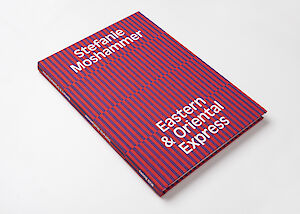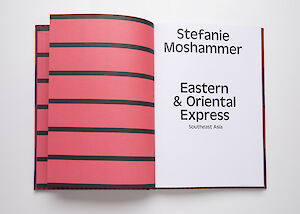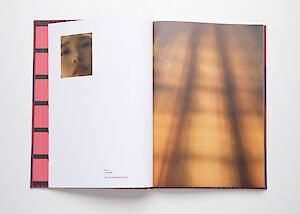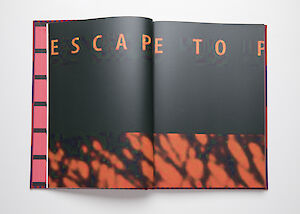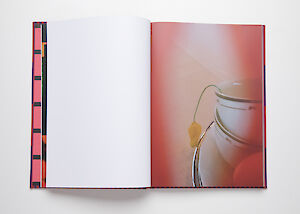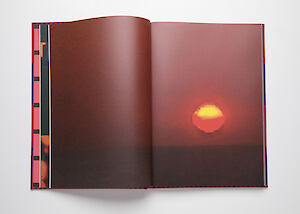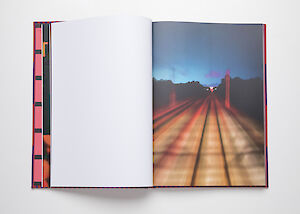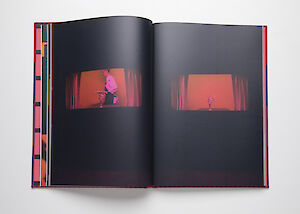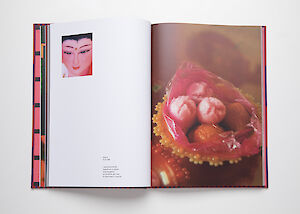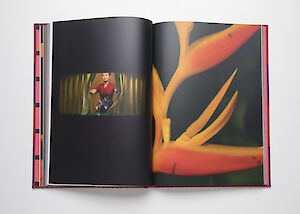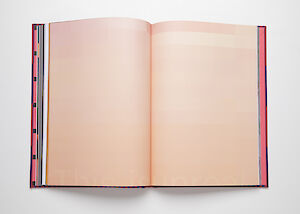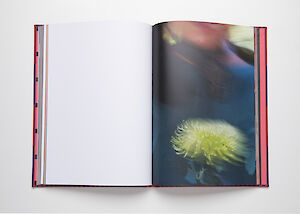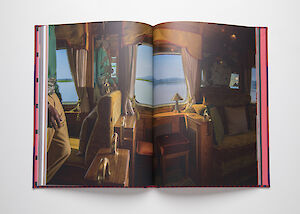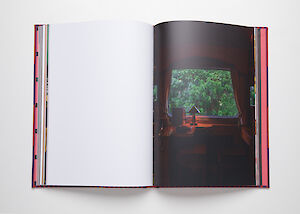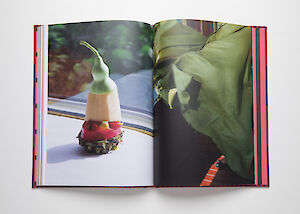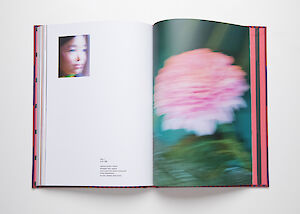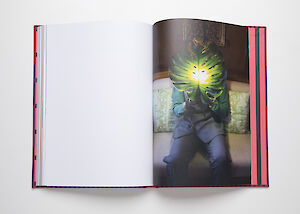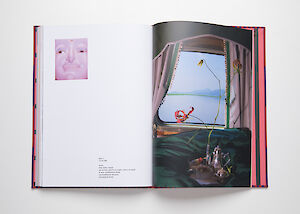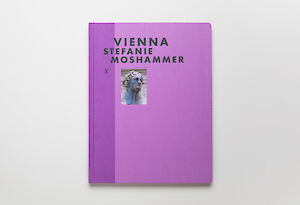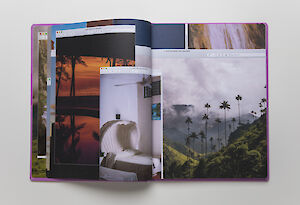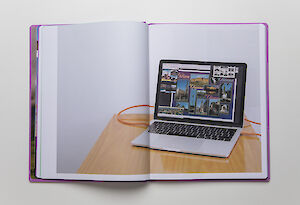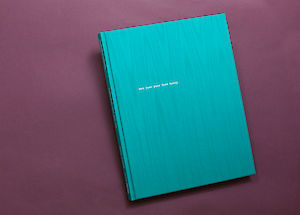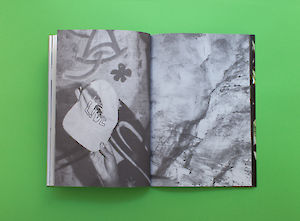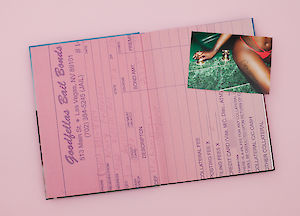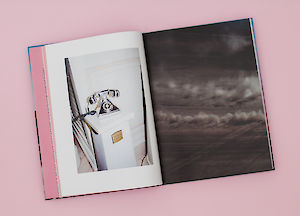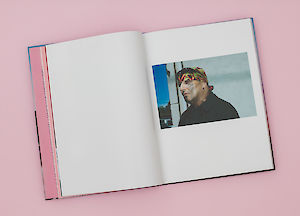| Edition of 700 | 20,5 × 27,5cm |
| | 112 pages |
57 color plates on coated paper
hard cover with embossing
offset print, with post card
|
| Design & concept | Stefanie Moshammer |
| Publisher | Fotohof edition |
| ISBN | 978-3-902993-13-7 |
| |
€ 35,– SOLD OUT
|
Special Edition: book & print
pigment print on baryta paper
Ed. of 20, signed, numbered, labeled |
€ 500,–
|
Orders
[Studio Stefanie Moshammer] only Special Edition: book & print € 500,–
Reviews
[Collector Daily]
[Best Books of 2015]
[Yet-Magazine]
“For this series, Moshammer photographed seven dancers, ranging in age from 21 to about 50. Her intimate portraits were shot against the backdrop of the city and often in funky, down and out hotel rooms. While her photographs give little insight into personal life stories of the women she depicts, the pictures capture the nuances of their immediate environments and the illusionary worlds they have worked hard to create, walking a blurred line somewhere between reality and fantasy.
A fuzzy black and white aerial map of Las Vegas, with two dozen places marked with jaunty pink hearts, serves as an introduction to the book, and Moshammer’s photographs guide us through this stark tour, exploring the world that exists beyond the flashy casinos, the luxury nightclubs, and the fast cars. The mix of portraits of local residents, banal scenes, in-between landscapes, and curious details depicts Las Vegas as a mysterious city of extremes and contrasts. A picture of a night road covered with stains (is it blood? or maybe machine oil), a glimpse of a naked woman in high heels on her knees next to a wooden table, and a shot of a red ceiling (an obvious reference to Eggleston), set the mood for the fragmented, dark, and often bizarre visual narrative.
One of the first images in the book shows money thrown on the tiled floor and hands piling it up – but these are just one dollar bills, an appropriate metaphor for this slice of Las Vegas. The portraits that follow are both controlled poses and impromptu modeling shots, ranging in mood from confident (in an explicit slinky coverall in a tiger pattern) to eager (in a Mickey Mouse t-shirt and tiny shorts). One of the most surreal images in the book depicts a young girl sitting on a bed in a motel room with the walls painted like lush leafy green jungles; her red bikini matches an apple on the tree in the background, adding something mythical to an otherwise ordinary moment. There are also photos of women whose faces we don’t see – they are hidden by shadows, cropped out, or shot from behind, like the perfect white bed with a woman in a black underwear seen from the back. Moshammer spent time with all of these women, listening to their stories, and building some level of trust. Her efforts to connect with the subjects are reflected in the portraits, where the sitters appear confident, relaxed, and at ease with the camera. But as these stories unfold, we can’t help but wonder where the line between documentation and fiction really is.
Playing the game of the city, the strippers are part of the machine that keeps Las Vegas alive and moving. And part of what Moshammer hones in is this creation of artificial identities that fulfill men’s desires and fantasies. Images of bright pink Cadillacs, exotic plants, tattoos, and golden interior decorations represent fragments of this façade, while shots of the dusty landscape and the burning desert hint at the need for a possible escape. Vegas and She becomes a poetic metaphor for the whole Las Vegas experience, where the harsh reality of nature stands in contrast to the city driven by desire and imagination.
In general, the flow of Moshammer’s images works well in book form, as the layout and presentation allow photographs of various sizes to interact. Pink and red are the dominant colors in the series and a few images have pink borders around them, reinforcing this palette. Quotes by Lewis Carroll, Vladimir Nabokov, and the artist (also with pink backgrounds) have been placed between the pages, adding additional reference points to the larger story and helping to blend the personal and the fictional into one. A hotel bill and an inmate bail bond receipt are used for the endpapers, gently hinting at the extremes of potential Las Vegas experiences.
Moshammer’s poetic writing seems to sum it all up: ‘Oh Vegas, Vegas and She. A report of circumstances, evidence, an indication of love and sorrow’. Her Las Vegas is full of ambiguous contradictions, both ordinary and extraordinary, a place where female reality is entirely (and often depressingly) negotiable.”
– by Olga Yatskevich, Collector Daily, US
“This project appears as a synthesis of various olive-grey shades of a single night : a night in the city that embraces every night — alive, pulsing and fluttering: Las Vegas.
The contents of the book seem to be as if they were dumped from a drawer of an arid Nevada motel— flesh and feeling are tied together. The author, absorbed by empathy, forces us to engage with the glazed reality of her protagonists: the sandy desert backgrounds, the chaotic dance of neon, humour, tears, glitter, violence and camaraderie.
Environments exude emotions, such as pain, misery and awkwardness.
Human portraits don’t have a specific connotation, yet, through their vividness, are able to reveal features that can transform a face and a body into a genuine character.
The constant use of a flash does not flatten the image — even if it is always the protagonist. Rather, it functions in a way as if probing the walls of a cave: walls close to one’s fingertips, yet almost incomprehensible. The eye of the photographer — moved by a powerful and emotional scenario — translates the bitter and rough stories into sweet and smooth images.”
– by Mariella Amabili, Yet Magazine, CH
“Despite the saturated glitz and gloss floating on the surface of these images, Vegas and She offers a subtle yet devastating insight into the moral desert that is Las Vegas, and hauntingly hints at the desperate reality that sits at the heart of this city, plagued by fantasies of lust, depravity and vice. Moshammer quietly hovers around the edges of the lives of strippers, escorts, and call-girls, intimating rather than exploiting their experiences — and the extremes to which they are driven — in a manner that is respectfully restrained but nevertheless deeply effective. The photographs themselves are visually seductive and seemingly ambiguous, and yet collectively they evoke a profound sense of sadness that is both painfully bleak and powerfully resonant.”
– by Aaron Schuman, photographer, curator, writer, US
